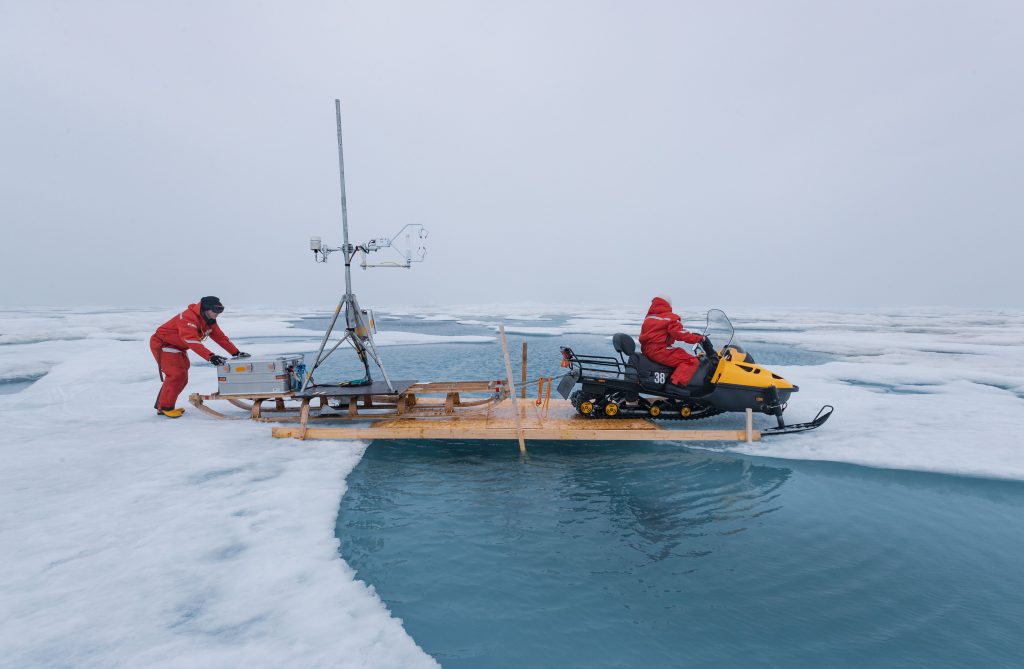by Matthew Shupe, CIRES/NOAA scientist and co-coordinator of MOSAiC
All along we have known that once there was swell in the area, the floe could fall apart at any time. We tried to imagine how far we would be from the ice edge when we could actually feel the swell. Is it 50 nautical miles or more? We’ve come to less than 10 nautical miles from a reasonably well defined ice edge…. And today we started to feel legitimate swell. You can actually look at the little chunks of ice around the ship and see them moving relative to each other. “Signs of swell” was one of our major criteria for eventually leaving the floe, so here we are.

After the major take down yesterday we only had a few things left on the ice. Some power cables, a couple of huts, and our flux sled standing out near the First Year Ice part of our floe. So today was the day to get all of this back onboard the ship. My main concern was that since we deployed the flux sled there is now a large drainage channel (~3m wide) cutting off the path back to the ship. We’ve been going over that initially by jumping, but then with a bridge, and finally a bridge with extensions on it. The channel under the bridge is now above the knee in depth and the ice is undercut on both sides. And the sled is about 500 kg. We came up with a plan to use these modular floats in the water and push the sled onto these, then over to the other side. A little ferry ride…..
So with a team assembled, and on high alert for the 3 polar bears that had passed through camp a couple hours prior, we took the 15-minute walk out to the sled. First pushed it off of its own little ice tower. Then, like a well-coordinated bobsled team (we called this event the Jamaican bobsled) we pushed the sled to the edge of the channel. Our plan with the floating ferry seemed a bit dodgy (as my British colleagues say) and while exploring options someone found that the channel was not so deep in another area, and the edges were more gradual. So we pushed in that direction, into the water…… slurp as water gushed in the top of my boots…. And then back up the other side. The rest of the journey back to the ship was smooth and easy, even with the water sloshing around in my boot. This sled slides so well that sometimes we had to slow it down. Back at the ship, and within 15 minutes, the sled was lifted up and onboard again, safe from the degrading conditions on the ice.

And indeed things have been falling apart. New little cracks all over the floe. A larger crack, eventually extending to 3m or more heading out behind the ship and through a pressure ridge out towards Met City. The decision to pull things back on board was a good one, as the floe is becoming increasingly unstable. I felt the movement myself as I jumped from one chunk to the next. We can no longer operate or realistically move equipment on the ice any more. Perhaps parts of the floe will remain intact for us to continue some manual measurements over the coming days. This all depends on the floe and how its story really ends.

